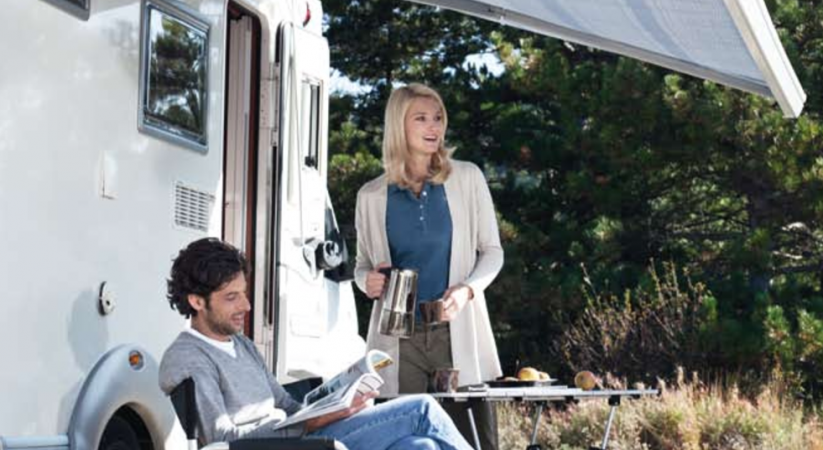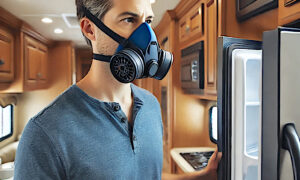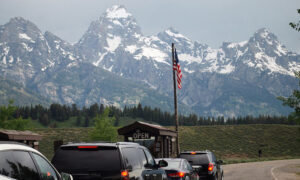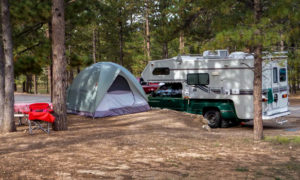
Last updated on June 1st, 2016 at 08:59 am
Your RV Awning is an Important Investment
Summer is just about here, and that means it’s time to get your RV out of storage and check your RV awning.
The nights are getting warmer as each day passes, which means the sun is as powerful as ever. The only downside about these bright, sunny days is that the sun’s rays can be quite overbearing if you don’t have access to shade. This is why a durable RV awning should be a part of your RV travel lifestyle. It’s a fail-safe way to ensure you have shelter from the sun and keep cool no matter where your RV is parked.
Because your RV awning is such an important investment, you want to do all you can to make sure it holds up for as long as possible. While it’s not hard keeping it in good condition, there are certain things you’ll want to avoid doing in order to preserve your awning. Here are some mistakes to avoid:
Mistake #1: Leaving Your Awning Out Unattended
Weather can change quickly, so you always want to close your RV awning if you’ll be gone for a significant amount of time. Strong winds, harsh rains, and other forms of inclement weather can wreak havoc on your awning, and if you’re not there to retract it, you could come back to an awning that is severely damaged or even entirely torn off of of the RV.
Canopy clamps can help your awning hold up against strong winds, and setting your awning at an angle designed to let rain run off with help prevent damage caused by the weight of rain pooling in the canopy. However, your best bet is still to secure your awning away if you won’t be able to quickly return to it if the weather takes a turn for the worst.
Mistake #2: Failing to Secure Your Awning Before Operating Your RV
This tip may sound rather obvious, but it’s important to mention, as operating your RV without properly securing your awning can result in harm to you, other people, and clearly, the awning itself.
Especially if you are driving on the freeway, or any other area where strong winds are present that could cause your awning to unroll, you’ll need to take extra precautions to make sure your awning is tightly latched and put away.
This is why it’s important to secure the travel locks or any type of security feature that your awning comes equipped with before hitting the road. Double checking the security of your rolled up awning while traveling will help keep you and everyone else on the road safe, so your awing should be on your check list when you make any pit stops.
Mistake #3: Not Keeping Your Fabric Clean
A large part of taking good care of your RV awning relies on regularly cleaning it. This will help prevent rot, mold, mildew, stains, etc. from destroying the fabric. There are two main types of fabric when it comes to RV awnings: acrylic and vinyl. The cleaning steps you’ll need to take will depend on what type of fabric your awning is made from, but with either type, hosing off the fabric on a regular basis will help minimize the need for deep cleanings.
The best way to keep your specific type of fabric clean should be highlighted in the instructions the awning manufacturer provides, so hold onto that information or check the manufacturer’s website. Likewise, they should also provide you with the most efficient way to patch up any holes that occur in your fabric.
Mistake #4: Rolling Up Your Awning While Wet
If you just cleaned your awning, or it has got caught out in the rain, it’s important to allow it to dry before retracting it if time allows. If you must roll it in while it’s still damp, you’ll need to extend it out and let it air dry as soon as possible. This is because mold and mildew can form when a moist awning is put away for a long period of time.
Mistake #5: Using Oil-Based Lubricants on Your Awning Hardware
Lubricating the moving parts of your awning is an important part of preventing rust and corrosion so that everything stays in working order, but using anything that’s grease-based could do more harm than good.
A thin layer of silicone spray will do the trick. Oily substances, such as WD-40, will just cause more dirt and dust to collect on your awning.
Now you have a better idea of what to do and what NOT to do when it comes to caring for your RV awning. If you have any tricks or tips of your own on this subject, let us know in the comments below!







